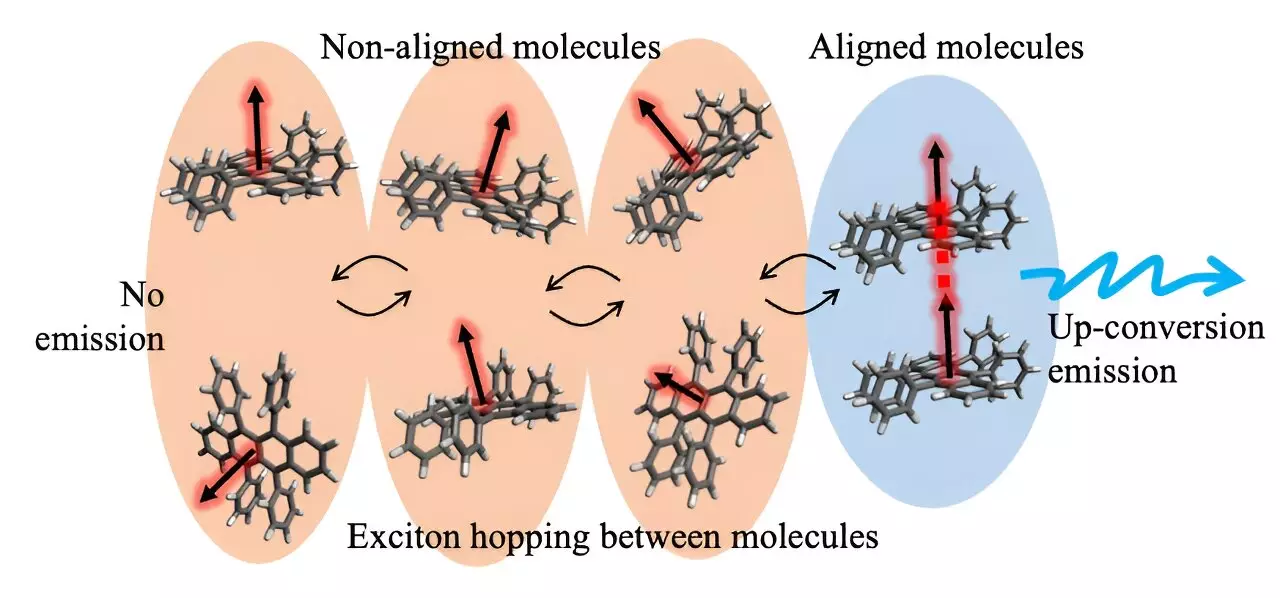Photon up-conversion is a process that involves combining two low-energy photons into one high-energy photon. This efficient conversion of energy has numerous applications in various fields such as photovoltaic cells, organic light-emitting diode (OLED) displays, and even anti-cancer therapies. Researchers around the world have been working tirelessly to develop materials that can facilitate this up-conversion process. However, a key challenge in this area has been understanding how two triplet excitons can efficiently combine their energies to produce a high-energy photon.
Kobe University photoscientist Kobori Yasuhiro and his research group have made a significant breakthrough in this field by studying the electron spin states of excited molecules. They discovered that the alignment of electron spin states of two triplet excitons is crucial for the transfer of energies to a light-emitting molecule. This alignment depends on the relative orientation of the molecules involved in the process. By observing the time evolution of electron spin states in solid-state materials, they were able to develop a new theoretical model that elucidates how electron spin states are related to the up-conversion process.
The research conducted by Yasuhiro and his team provides a crucial guideline for designing materials that can achieve highly efficient photon up-conversion. One key finding is that triplet excitons need to be able to move freely between molecules of different orientations to maximize the likelihood of their alignment. However, this hopping must not be too rapid to allow enough time for the interconversion of excited states. By understanding these microscopic mechanisms, researchers can now tailor materials to enhance the up-conversion process significantly.
The newfound knowledge about efficient photon up-conversion has far-reaching implications beyond just solar cells. It could revolutionize fields such as cancer therapy and diagnostics by enabling the use of near-infrared light for optical up-conversion without causing harm to the human body. This breakthrough opens up new possibilities for utilizing light energy in innovative ways that could have a profound impact on multiple industries.
The research conducted by Kobe University on photon up-conversion represents a significant advancement in the field of materials science. By understanding the role of electron spin states in the up-conversion process, researchers can now design highly efficient materials that have the potential to revolutionize various industries. This newfound knowledge has the power to drive innovation and pave the way for the development of groundbreaking technologies that harness the power of light in unprecedented ways.


Leave a Reply